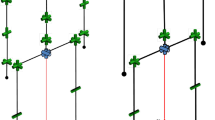Abstract
The objective of this study is to simulate the Stand-to-Prone-to-Aim task of a soldier using a full-body, three dimensional digital human model. The digital human is modeled as a 55 degree of freedom branched robot. Six degrees of freedom represent the orientation and position of the pelvis coordinate frame of the digital human and 49 degrees of freedom represent the revolute joints which model the human joints. Motion is generated by a multi-objective optimization approach minimizing the mechanical energy and joint discomfort simultaneously. The optimization problem is subject to constraints which represent the limitations of the environment, the digital human model and the motion task. Design variables are the joint angle profiles. Using the given method, we can predict a realistic motion for the “Stand-to-Prone-to-Aim” task. We are also able to very well predict the “Natural Point of Aim” for this task which is validated (along with other determinants of motion) and matches very closely with the experimental data which is motion captured in the VSR Lab at the University of Iowa. Inevitable transfers of weapon as an external object between the two hands have to occur in performing this task. Collision avoidance of the rifle with the hands and body during these rifle transfers is a very challenging constraint that has been implemented. These collision avoidance modules use compound primitives such as finite cylinders and finite planes whose edges are smoothed out in order to have continuous gradients for the collision avoidance constraint.
Access this chapter
Tax calculation will be finalised at checkout
Purchases are for personal use only
Similar content being viewed by others
References
Alexander, T., Conradi, J.: On the applicability of digital human models for personal equipment design. In: HCI International 2011, Orlando, 9–14 July 2011
Granieri, J.P., Crabtree, J., Badler, N.I.: Production and playback of human figure motion for 3D virtual environments. In: Proceedings of Virtual Reality Annual International Symposium, pp. 127–135 (1995)
Hariri, M., Bhatt, R., Arora, J., Abdel-Malek, K.: Optimization-based collision avoidance using spheres, finite cylinders and finite planes. In: Proceedings of the 3rd International Conference on Applied Human Factors and Ergonomics (AHFE), Miami (2010)
Macko, M., Racek, F., Balaz, T.: A determination of the significant points on sporting shooter body for comparison of the computing and measuring shooter movement. In: Proceedings of the WSEAS Applied Computing Conference, Athens (2009)
Pratt, D.R., Barham, P.T., Locke, J., Zyda, M.J., Eastman, B., Moore, T., Biggers, K., Douglass, R., Jacobsen, S., Hollick, M.: Insertion of an articulated human into a networked virtual environment. In: Proceedings of the Fifth Annual Conference on AI, Simulation, and Planning in High Autonomy Systems, 7–9 Dec 1994
U.S. Army: Rifle Marksmanship (Field Manual 23-8). U.S. Army, Fort Benning. Department of the Army Headquarters, Washington, DC (1974)
U.S. Marine Corps.: Rifle Marksmanship (Marine Corps Reference Publication, MCRP 3-01A); U.S. Marine Corps., Albany; Department of the Navy Headquarters, Washington, DC, 29 Mar 2001
Wysocki, F., Fowlkes, D.: Team target engagement simulator advanced technology demonstration. In: Proceedings of the Individual Combatant Simulation Symposium (1994)
Xiang, Y., Chung, H.J., Mathai, A., Rahmatalla, S., Kim, J., Marler, T., Beck, S., Yang, J., Arora, J.S., Abdel-Malek, K.: Optimization-based dynamic human walking prediction. In: SAE Digital Human Modeling Conference, Seattle, June 2007
Acknowledgments
This research is funded by Natick’s Biomechanical Simulator System (BAS) (Contract Number: W911WY-06-C-0034).
Conflict of Interest The second and third authors are part owners of Santos Human Inc., that has the licensed technology from the University of Iowa.
Author information
Authors and Affiliations
Corresponding author
Editor information
Editors and Affiliations
Rights and permissions
Copyright information
© 2013 Springer Science+Business Media Dordrecht
About this paper
Cite this paper
Hariri, M., Arora, J., Abdel-Malek, K. (2013). Optimization-Based Prediction of a Soldier’s Motion: Stand-Prone-Aim Task. In: Viadero, F., Ceccarelli, M. (eds) New Trends in Mechanism and Machine Science. Mechanisms and Machine Science, vol 7. Springer, Dordrecht. https://doi.org/10.1007/978-94-007-4902-3_49
Download citation
DOI: https://doi.org/10.1007/978-94-007-4902-3_49
Published:
Publisher Name: Springer, Dordrecht
Print ISBN: 978-94-007-4901-6
Online ISBN: 978-94-007-4902-3
eBook Packages: EngineeringEngineering (R0)




